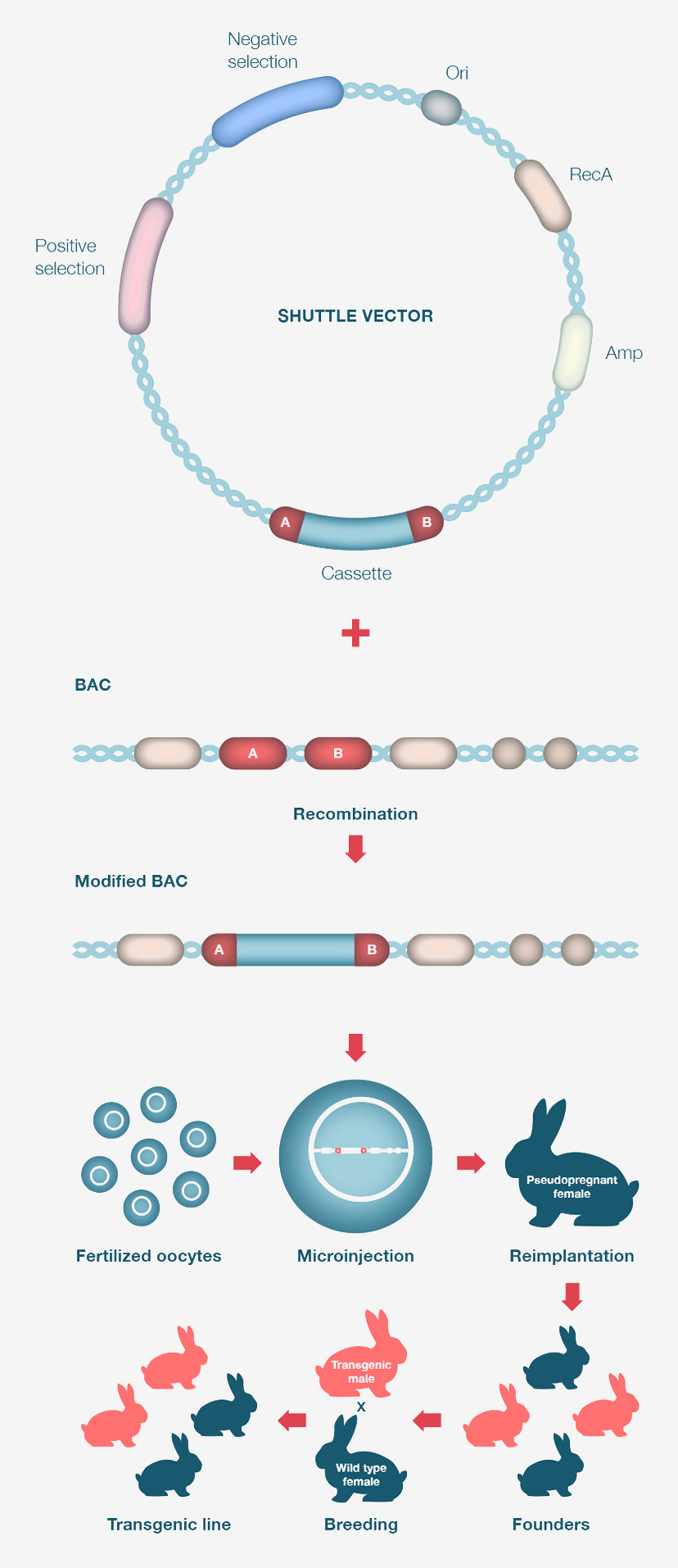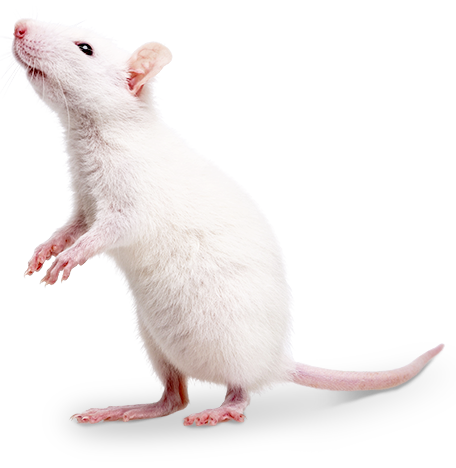Bacterial Artificial Chromosome
Transgenesis with Bacterial Artificial Chromosome (BAC)


BAC transgenesis has many important applications in basic and applied biomedical research, from the analysis of regulatory elements, controlling gene expression to creating animal models. BACs can harbour genomic segments as large as 300 kb, they are invaluable for the analysis of distant cis-regulatory elements, rescue of mutant phenotypes and regulated expression of human disease-related genes in animal models [1].
This system is based on the well-characterized Escherichia coli F-factor (functional fertility plasmid), a low copy plasmid that exist in a supercoiled form in host cells [2]. F-plasmids play important role in the life of bacteria, allow genes to be transferred and promote the even distribution of plasmids during the bacterial conjugation and cell division.
As transgenes, BACs can be modified by homologous recombination in E. coli before the microinjection [3], enhancing their utility in transgenesis. BACs generally offer stable integration, and show a linear relationship between copy number and the expression level of integrated genes. Normally, the number of BAC copies in the genome is low, and the test.com of these integrations is random. The copies integrate into the genome usually at one target site. BAC transgenes direct gene expression at physiological levels with the same developmental timing and expression patterns is equivalent to endogenous genes in transgenic animal models [4].
ImmunoGenes is able to dependably create animal models with large genomic inserts by BAC transgenesis method.
These transgenic animals are generated by pronuclear injection of fertilized oocytes with a linearised, purified BAC fragment, followed by transfer of the injected oocytes to pseudopregnant foster mothers.
[1] G. Abe, A. Schouw, M. L. Suster, and K. Kawakami, “Transposon-mediated BAC transgenesis in zebrafish,” Nat. Protoc., vol. 6, no. 12, pp. 1998–2021, 2011. [2] H. Shizuya and H. Kouros-mehr, “MINIREVIEW SERIES FOR THE 50TH VOLUME The development and applications of the bacterial arti ® cial chromosome cloning system,” pp. 26–30. [3] D. L. Court, J. A. Sawitzke, and L. C. Thomason, “Genetic Engineering using Homologous Recombination,” Ann. Rev. Gene., vol. 36, no. 1, pp. 361–388, 2002. [4] M. L. Van Keuren, G. B. Gavrilina, W. E. Filipiak, M. G. Zeidler, and T. L. Saunders, “NIH Public Access,” vol. 18, no. 5, pp. 769–785, 2011.






